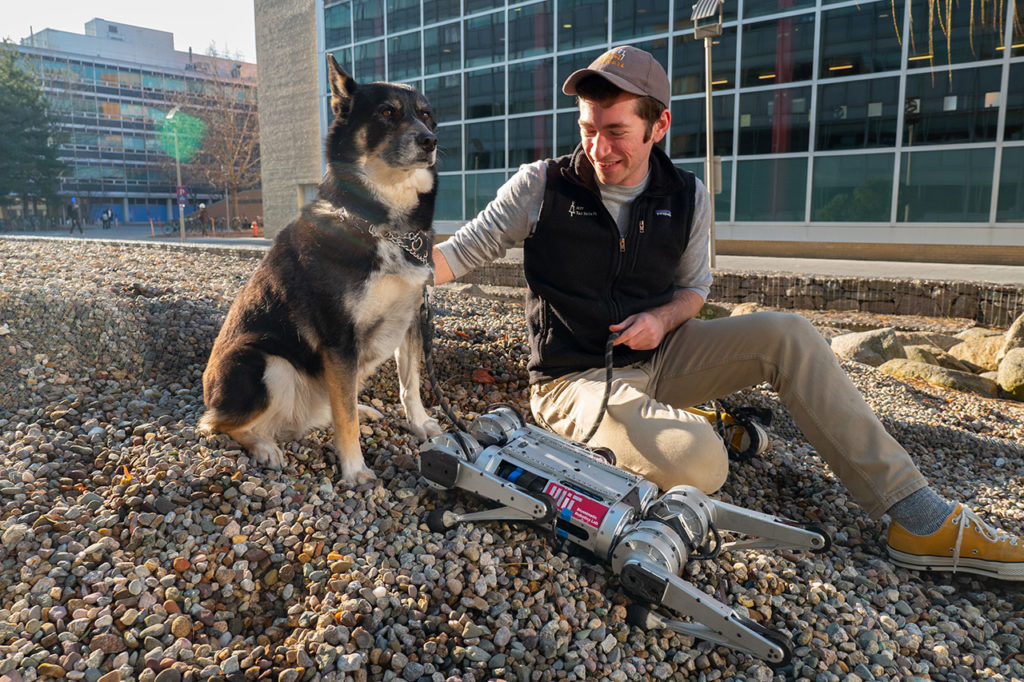In recent years, four-legged robots inspired by the movement of cheetahs and other animals have made great leaps forward. These machines can now walk, dance, avoid obstacles, and open the door. But they still lag behind their mammalian counterparts when it comes to high-speed running and traveling across many different terrains, which are slightly trickier for the bots to learn.
Researchers at MIT’s Improbable AI Lab, part of the Computer Science and Artificial Intelligence Laboratory (CSAIL), have been working on fast-paced strides for a robotic mini-cheetah. The team has now developed a model-free reinforcement learning system that allows MIT’s Mini Cheetah to learn how to run fast and adapt to walking on challenging terrain.
Programming a robot to move faster and more confidently across varying terrains and change its gait and speed when they’ve identified a transition is simply very hard. The process is tedious because if a robot were to fail on a particular terrain, a human engineer would need to identify the cause of failure and manually modify and upgrade the program to adapt to the changes. This is a time-consuming process that inevitably sets the robot up for failure every time it encounters something new.

A better approach is learning by trial and error that removes the need for a human to specify precisely how the robot should behave in every situation. This would work if – the robot could experience an extremely wide range of terrains. The robot can automatically modify and alter its behavior and movements all by itself when it encounters a new terrain.
The new learning-based approach lets the robot learn to run in a simulator, using a simple neural network as the controller. Thanks to modern simulation tools, a robot can accumulate 100 days’ worth of experience on diverse terrains in just three hours of actual time. The robot’s behavior improves from simulated experience and the new approach critically also enables successful deployment of those learned behaviors in the real world.
The four-legged robot can adapt to unstable terrain like gravel and recover from trips and collisions with obstacles. As seen in the video below, the new system can also adapt to changes in the robot itself, such as a disabled leg.
This learning-based method outperforms previous human-designed methods and allows the Mini Cheetah to set a record for speed. The system enabled MIT’s mini-cheetah to run as fast as 3.9 m/s (8.7 mph), which researchers say is the highest reported speed to date. Moreover, the robot can turn at high speed, even on slippery terrain like ice.
Achieving fast running requires pushing the hardware to its limits, changing the robot’s hardware dynamics. MIT’s controller adapts to this change in hardware dynamics.
The new approach isn’t just about teaching robots to run. Researchers have already started applying this paradigm to other robotic systems, including robotic hands that can pick up and manipulate many different objects.
MIT’s Mini Cheetah robot run faster than ever
Source: Global Access News

No comments:
Post a Comment